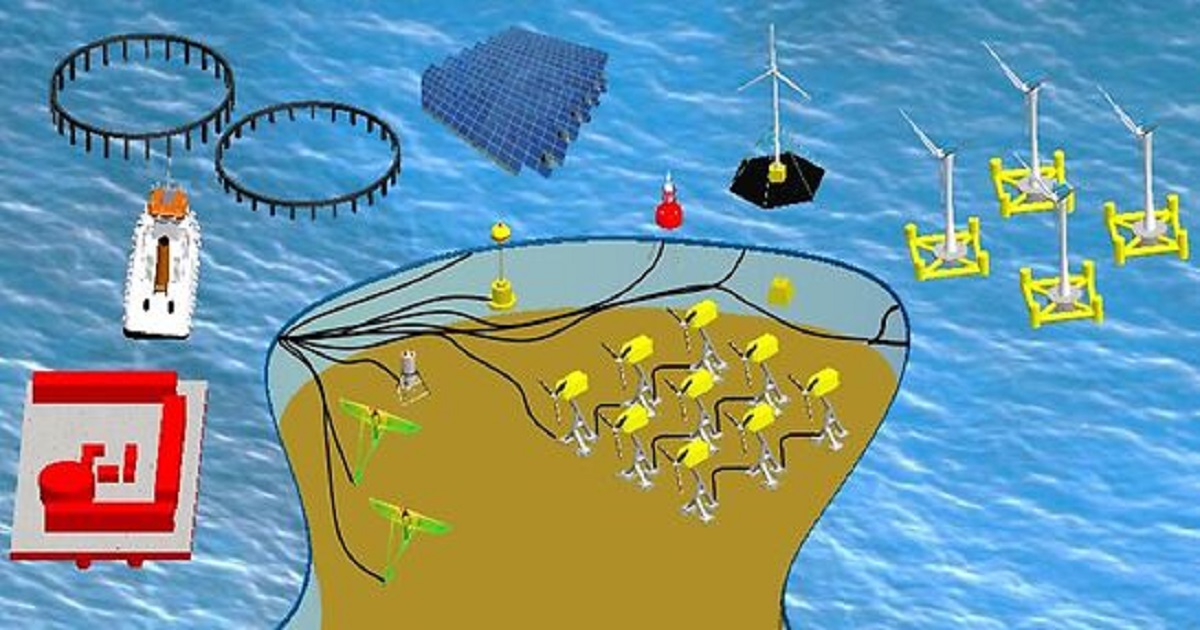Marine Wind and Other Ocean Energy Key Technologies
A special issue of Journal of Marine Science and Engineering (ISSN 2077-1312). This special issue belongs to the section "Marine Energy".
Deadline for manuscript submissions: closed (20 September 2022) | Viewed by 3249

Special Issue Editor
Interests: wind and marine renewables; hydrogen energy storage; wind, tidal and wave energy forecasting; ocean dynamics studies; machine learning; artificial intelligence; energy management systems; marine ecology studies
Special Issue Information
Dear Colleagues,
The aim of this Special Issue is to present recent advances in the field of marine wind and ocean energy key technologies. A good knowledge of key technologies of wind and ocean energy is of major importance for the design, development, and deployment of offshore renewables to support the sustainability goals of nations and blue economy initiatives. In this aspect, studies related to either fundamental or applied research are welcome in this Special Issue, including case studies, laboratory-based studies, field deployment, and testing, covering the key technologies in resource mapping, device development, and farm designs related to marine wind, tidal, wave, OTEC, salinity gradient, and other complimentary technologies aiming at clean energy development. Topics of interest for this issue include but are not limited to the following areas:
- Renewable resource assessment;
- Site-device matching;
- Device modularization;
- Device efficiency improvement designs and methods;
- Low-speed specific turbines;
- Hybrid renewable energy systems;
- Disaster resilient variants and remote grids;
- New energy storage methods, including novel batteries and hydrogen integration;
- Novel moorings and foundations;
- Renewable resource characterization methods and tools;
- Floating hybrid renewable systems;
- Novel deployment, maintenance, and decommissioning strategies;
- Health monitoring technologies.
Dr. Narasimalu Srikanth
Guest Editor
Manuscript Submission Information
Manuscripts should be submitted online at www.mdpi.com by registering and logging in to this website. Once you are registered, click here to go to the submission form. Manuscripts can be submitted until the deadline. All submissions that pass pre-check are peer-reviewed. Accepted papers will be published continuously in the journal (as soon as accepted) and will be listed together on the special issue website. Research articles, review articles as well as short communications are invited. For planned papers, a title and short abstract (about 100 words) can be sent to the Editorial Office for announcement on this website.
Submitted manuscripts should not have been published previously, nor be under consideration for publication elsewhere (except conference proceedings papers). All manuscripts are thoroughly refereed through a single-blind peer-review process. A guide for authors and other relevant information for submission of manuscripts is available on the Instructions for Authors page. Journal of Marine Science and Engineering is an international peer-reviewed open access monthly journal published by MDPI.
Please visit the Instructions for Authors page before submitting a manuscript. The Article Processing Charge (APC) for publication in this open access journal is 2600 CHF (Swiss Francs). Submitted papers should be well formatted and use good English. Authors may use MDPI's English editing service prior to publication or during author revisions.
Keywords
- wind and ocean energy system
- floating and seabed-based clean energy system
- site-based farm optimization
- new energy carrier/storage
- hybridization of energy systems
- control system strategies
- turbine efficiency improvement
- condition-based asset health monitoring
- resource assessment
- technoeconomics of ocean energy systems
Benefits of Publishing in a Special Issue
- Ease of navigation: Grouping papers by topic helps scholars navigate broad scope journals more efficiently.
- Greater discoverability: Special Issues support the reach and impact of scientific research. Articles in Special Issues are more discoverable and cited more frequently.
- Expansion of research network: Special Issues facilitate connections among authors, fostering scientific collaborations.
- External promotion: Articles in Special Issues are often promoted through the journal's social media, increasing their visibility.
- Reprint: MDPI Books provides the opportunity to republish successful Special Issues in book format, both online and in print.
Further information on MDPI's Special Issue policies can be found here.





